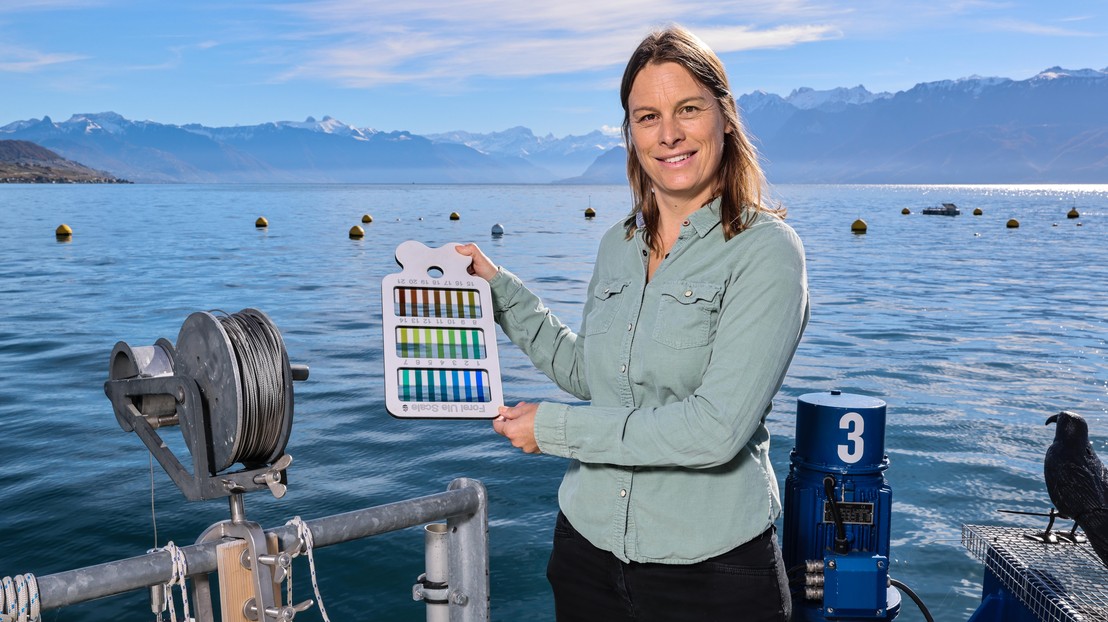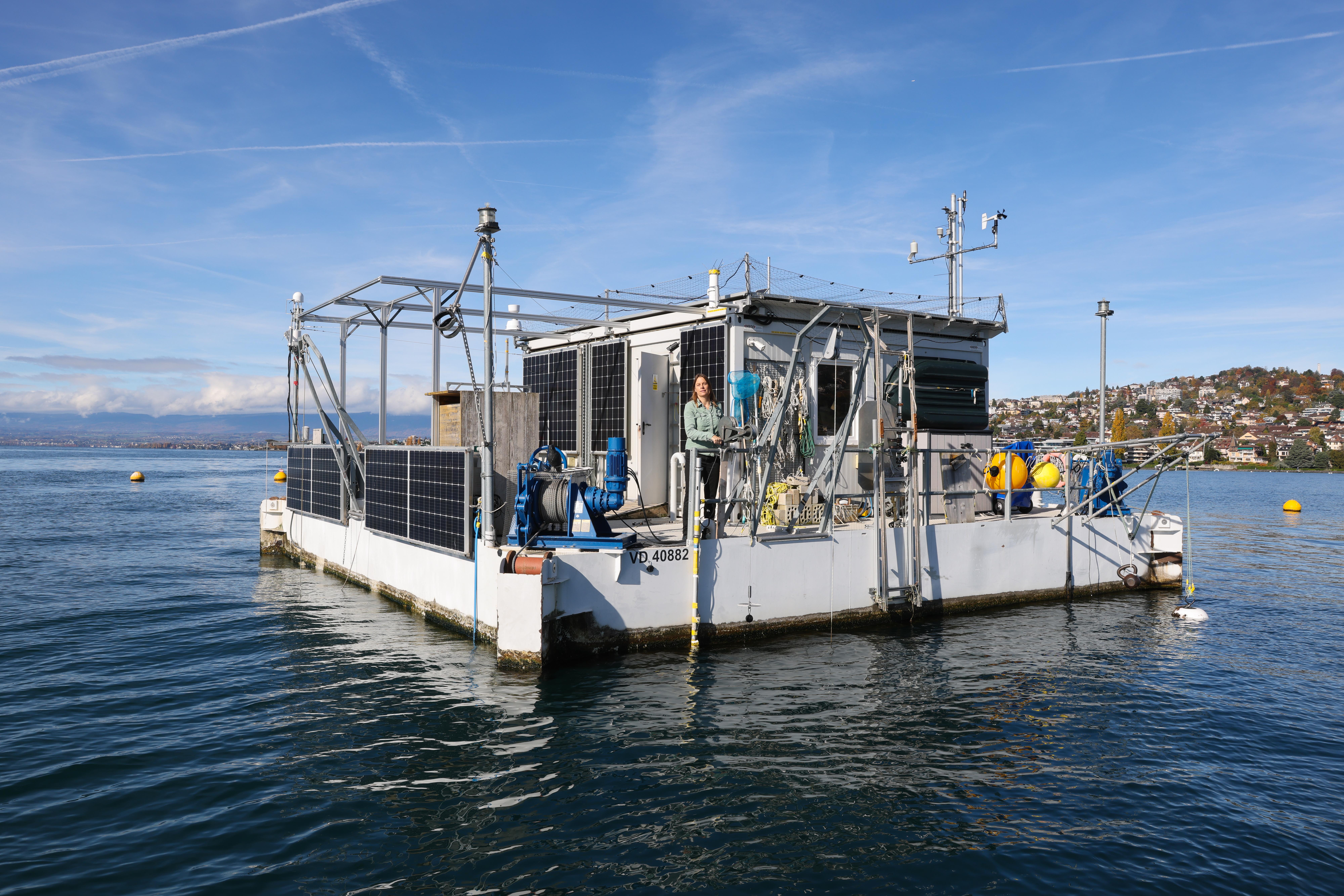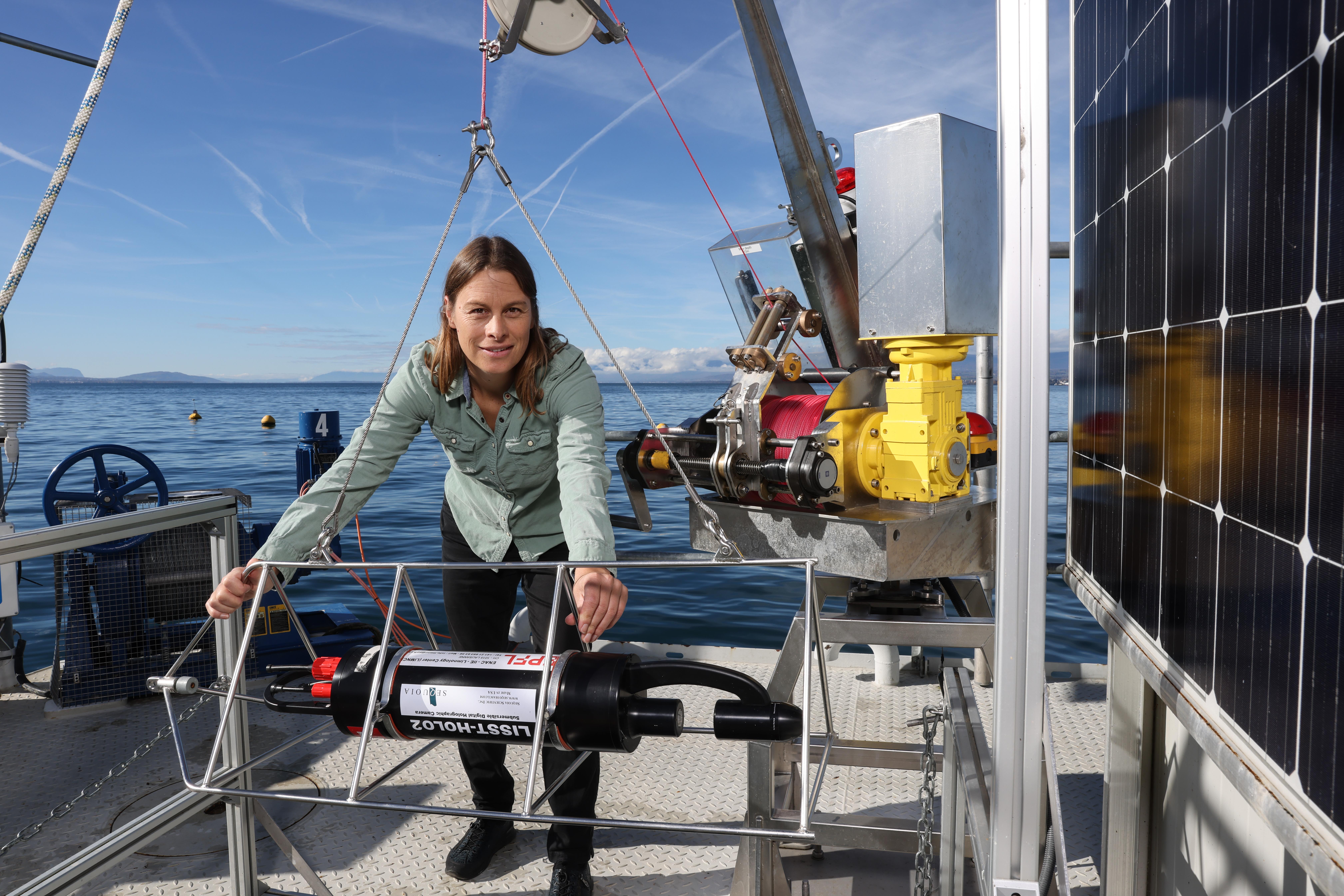
© 2025 EPFL/ A.Herzog
Over 700 volunteers took part in the Lémanscope citizen-science initiative, taking upwards of 3,400 measurements on Lake Geneva. This high turnout was a welcome surprise for the project team. We spoke with Natacha Pasche, the scientist behind the initiative, which will come to a close in February, 2026.
"Seeking 500 volunteers with a boat to help a research team collect data on Lake Geneva." This post was published in April 2024 to officially kick off Lémanscope: a citizen-science initiative of an unprecedented scale, conducted in collaboration with Eawag, the Association pour la Sauvegarde du Léman and UNIL, aimed at measuring the clarity and color of water across Lake Geneva in an effort to better understand seasonal variations in water quality.
Some 18 months later, as the project nears completion, we sat down with Pasche, who is the head of EPFL's Limnology Center, to take stock: How did the call for volunteers go? What were the benefits of having them involved? And what lessons can we learn from the experience ?
- Why did you decide to call on volunteers to collect data?
We needed large amounts of data to improve our models, and never could have collected them without the help of volunteers. We're able to obtain excellent satellite measurements of the light reflected off the lake thanks to a high-tech optical device installed on LéXPLORE*, but these measurements cover only a small area and the results can't be extrapolated to the whole lake because there are significant variations in some places. However, these reference measurements enable satellite images to be calibrated. In addition, remote sensing has its flaws. The water and land pixels tend to get mixed up near the shoreline, resulting in interference - especially in the narrow stretch of water near Geneva. We therefore needed additional measurements to supplement the satellite data, and the citizen-science approach seemed like the best choice.

- What were the volunteers asked to do?
The volunteers were given two tasks. The first was to photograph the color of the lake water. This color can vary according to three main factors: the quantity of algae, which give the water a green hue; what inorganic particles are contained in the water, which turn it gray or turquoise if they come from glaciers or white if they come from calcite precipitation, which is also known as a whitening event; and what organic compounds are dissolved in the water. These compounds come from the soil of the drainage basin and range in color from yellow to black. The second task was to measure water clarity using what's known as a Secchi disk. This is an approximately 20-cm-wide white disk that's attached to a measuring tape and fitted with a weight. Volunteers lower the disk into the water until it's no longer visible and then record the corresponding depth on a web app, called EyeOnWater, as a measure of water clarity. These two measurements are important properties: they tell us which kinds of particles and compounds are contained in the water and in what amounts - key indicators of water quality. Our volunteers took over 3,400 measurements of these properties in 18 months. It's fantastic to be able to obtain such a goldmine of information!
- What were your most significant findings?
We saw a huge change in water clarity between the first and second years of the project. In 2024, flooding had drained a lot of particles into the lake and clouded the water. But in 2025, we saw exceptional clarity readings - up to 15 meters in the winter and 4 meters in the summer, whereas the usual for summer is around 2.5 meters. And in May, we recorded the unheard-of figure of 11 meters! The lake water is usually opaque in the spring owing to the proliferation of algae, until zooplankton emerge and eat the algae. One likely explanation for the May reading is the growing population of quagga mussels in Lake Geneva, as these organisms filter and eat phytoplankton. Another is that the deepwater renewal process was only partial in 2025, reaching just 110 meters, owing to global warming. A full renewal - that is, of the entire 307-meter depth - hasn't taken place since 2012. As a result, fewer nutrients have risen to the lake surface. But we plan to continue our analyses.

- How many citizens volunteered over the 18 months?
We initially hoped to recruit 500 volunteers but soon found ourselves with 650 people. Now we have over 700! Around 100 of them are very active. They are mainly retired people with a boat and time on their hands. But there are other groups too - a young couple signed up, for example, and came up with the idea of using paddles. What really struck me was how motivated the volunteers are. Some of them took their boat out for the sole purpose of collecting data or scheduled their vacation to stay near the lake. Everyone seemed to be really attached to Lake Geneva, wanting to protect it and taking a keen interest in the issues affecting it such as water quality, pollution and invasive species. A genuine community was created around this research project. We therefore began holding events to keep the community going, including site visits, tours of the LéXPLORE platform, information sessions, special evenings with presentations, site visits to different locations around the lake and webinars on topics picked by the volunteers themselves. Over 100 people signed up for one of the webinars!** One goal of citizen science is to raise awareness among the general public, and our project showed that it can be effective.
- What did this kind of initiative mean for you as a scientist?
I found it to be a very enlightening, instructive and personally rewarding experience. It showed us the concerns people have and brought up questions we wouldn't have thought of ourselves. The results show that citizen science data, when carefully controlled, not only reinforce the validation of satellite products, but also offer unique ecological insights that are impossible to obtain with sparse professional monitoring. It was also an opportunity to develop new skills such as how to explain our work to non-experts. One particular challenge was to dispel the myth that we scientists have all the answers and that volunteers are there only to listen. Citizen science puts everyone on more equal footing, showing volunteers that they also have insights to share that can be highly useful.
- Do you think more researchers will start using citizen science?
It's an additional research method - one that's pioneering and interesting, although not suitable for all fields and all kinds of studies. However, it has proven its merits, and it's shown that people do get involved if given the opportunity, and that they can be trusted. Also, there are varying degrees of citizen science. For example - and this is something we didn't do with Lémanscope - volunteers could be brought in right from the beginning of a research project to help scientists plan out the methodology, determine which variables to measure and establish how data will be collected. This approach is being used to an increasing extent in medicine and environmental science.
- Do you have other such citizen-science initiatives planned?
We're thinking about carrying out a citizen-science project to measure plankton concentration, or perhaps expanding this study to other Swiss lakes. For us, it's really important to keep the community alive and active.
*The LéXPLORE platform is a floating laboratory anchored since 2019 on Lake Geneva, off the coast of Pully, dedicated to studying the lake, its ecosystems, and the impacts of environmental and climate change.
**Next webinar scheduled for December 15, 2025, at 7 p.m.: Plastics in Lake Geneva, overdose? Register HERE






